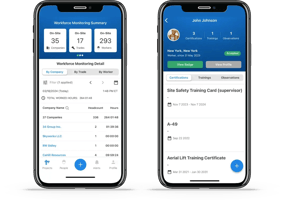Construction sites are a hub of activity, with workers and heavy machinery moving about...
The 5 Principles of Lean Construction: A Guide to Improving Efficiency and Reducing Waste
Are you tired of costly delays, budget overruns, and wasted resources on your construction projects? Look no further than the principles of Lean Construction. By focusing on efficiency, waste reduction, and continuous improvement, Lean Construction offers a proven approach to optimizing processes and maximizing value for clients. In this post, we’ll dive into the five key principles of Lean Construction and with Field Control Analytics’ services they can be applied to any project to achieve better outcomes.
Introduction to Lean Construction
In order to understand lean construction, it is first necessary to understand the principles of lean thinking. Lean thinking is a philosophy that seeks to eliminate waste in all forms in order to improve efficiency and quality. The goal of lean construction is to apply these principles to the construction industry in order to achieve the same level of success that has been seen in other industries.
There are three main principles of lean construction:
1) Eliminate waste – One of the main goals of lean construction is to eliminate waste in all forms. This includes anything that does not add value to the project or that increases costs without providing any benefit. There are many different types of waste that can occur in construction projects, so it is important to be aware of them and take steps to avoid them.
2) Improve flow – Another key principle of lean construction is improving flow. This means creating a smooth and efficient process from start to finish, with no bottlenecks or delays. This can be accomplished through careful planning and coordination among all members of the project team.
3) Enhance value – The final principle of lean construction is enhancing value. This means ensuring that every aspect of the project adds value for the client or customer. It also includes making sure that work is done right the first time, so there is no need for rework or repairs later on. By following these three principles, construction projects can be completed more efficiently and with less waste.
What are the 5 Principles of Lean Construction?
- Eliminate waste: Lean construction is all about eliminating waste in the construction process. This includes anything that does not add value to the project, such as excess materials, unnecessary steps, and inefficient processes.
- Build quality in: Lean construction focuses on building quality into the project from the start, rather than trying to fix problems later. This means using methods like prefabrication and modular construction to reduce rework and improve accuracy.
- Deliver what the customer wants: The goal of lean construction is to deliver what the customer wants, when they want it. This means understanding their needs and requirements and then designing and constructing the project to meet those needs.
- Empower workers: Lean construction empowers workers by involving them in decision-making and giving them the authority to make changes on the job site. This helps to eliminate waste and improve communication between workers and management.
- Continuously improve: Lean construction is an ongoing process of continuous improvement. This means constantly looking for ways to eliminate waste and improve efficiency in the construction process.
As you begin to understand each of the principles of lean construction, implementation into your specific business model follows.
FCA helps contractors who practice the lean principles on their construction jobsites.
FCA’s goal has always been to deliver what the customer wants, when they want it. We called it something different – flexibility and customer success! When it comes to lean construction practices, FCA’s continuous improvement process and waste elimination led first to the creation of its worker-based mobile application that allows workers to complete a self enrollment process prior to showing up at the jobsite day one. This saves valuable time and money not having to pay workers showing up day one who need to be enrolled and badged on the jobsite prior to jobsite safety orientation. Second, FCA created a universal badge eliminating cost and waste. The universal badge allows certain contractors to utilize one identification badge to access multiple sites. Third, FCA is eliminating waste and improving efficiency through the digitization of its onboarding and consent forms, doing away with all paper enrollment forms, and its creation of the electronic badge that unlocks turnstiles eliminating the waste of plastic badges.
Conclusion
Lean construction is an incredibly powerful tool for improving efficiency and reducing waste in the construction industry. Utilizing FCA’s suite of services to better understand your labor force, meticulously manage schedules, and adhere to timing constraints will aid in the implementation of lean construction practices. By understanding how FCA’s automating labor counts saves time on the jobsite you can maximize value while minimizing costs. Additionally, you’ll be able to improve productivity, stick to project timelines, and more easily control budgeting. Whether you are a contractor or an owner, using FCA’s data will facilitate the principles of lean construction and help ensure that every project is successful from start to finish.



